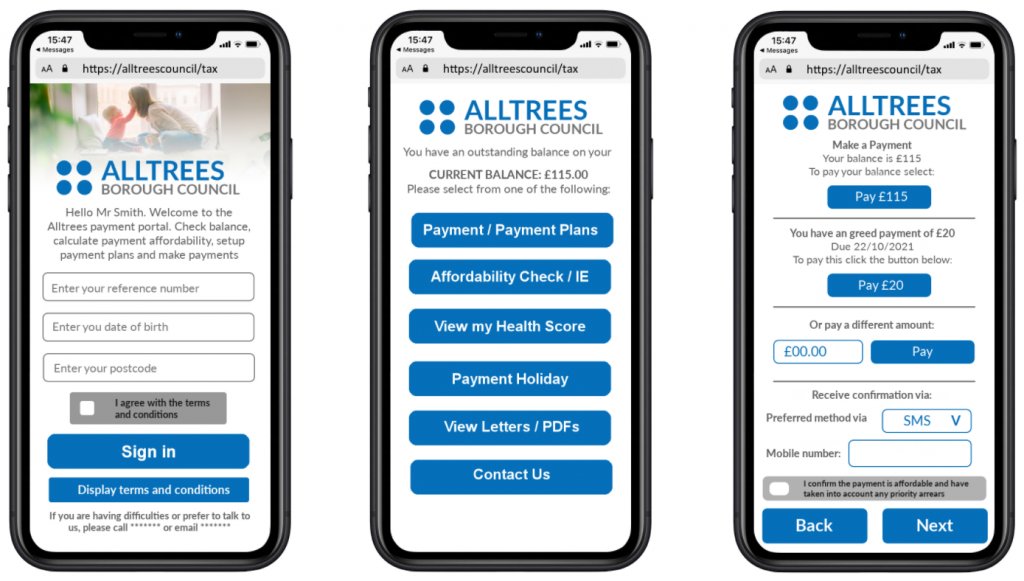
In the face of collection challenges, local authorities have to adapt in order to collect more council tax. Here’s how Mobile Collections can help.
Local Authorities in the UK face potentially one of their biggest challenges to date over the next 12 months. As a result of rising unemployment figures amid the coronavirus pandemic, an astonishing 1.3 million households in the UK have now fallen behind on their council tax payments, meaning that the total amount of monies owed is close to £4 billion.
With those statistics in mind, local authorities have to start analysing the ways that they currently collect council tax from residents in an effort to curtail the issue. New methods of collecting in more engaging and accessible ways have to be explored in an effort to maximise collection opportunities.
But before we get into what those strategies might be, let’s take a look at what else might be causing the record number of council tax arrears.
Why are council tax payments being missed?
Behavioural scientists at Voicescape discovered that as many as 96% of payment arrangements are broken or canceled, so it’s essential that local authorities can be flexible in the face of residents’ changing circumstances. This relies on quick, responsive, two-way conversations and a choice of repayment plans – something more traditional means of communicating with tenants cannot adequately deliver.
While some residents still prefer to receive their correspondence via mail, for many others letters aren’t as engaging as modern digital channels. For example, direct mail has an open rate of 75% compared with 95% for SMS.
Letters are also very expensive compared to mobile-focused channels. One local authority we speak to was sending around 250 reminders per week at an average cost of £1.60 per letter, which represents a cost per year of £20,800. Compare this to £494 for the year via SMS. That’s a saving of 97.84%.
There’s also a traceability element to consider with post in that the local authority can’t be sure about when a reminder has been opened or read.
Taking payments or arranging new payment terms over the telephone has also proven to be a limiting factor when trying to maximise collection potential, in that payments can only be taken during working hours, and only when a member of the admin team is free to do so. As with letters, there is also a cost challenge to address. In a study conducted by Esendex we found that the average cost for a collections agent to take a payment from a tenant was £1.25. Compare this with an automated mobile-focused equivalent at 60p. This represents a 52% saving per interaction.
What are Mobile Collections, and how are they better?
A mobile collections strategy offers a solution to these challenges. Each tenant receives a personalised SMS with a link to a fully branded, mobile-optimised environment where every activity that could be carried out with an agent, can be handled by the tenant.
After completing an identity verification stage, residents can either make a payment, set up a repayment plan (including direct debits), carry out income and expenditure assessments (including optional access to residents’ finances via open banking), make a promise to pay, or start a text-based chat with an agent over a channel of the resident’s choice.
All data used by a mobile collections solution is fed from your existing CRM system, and then once the resident has done their part, that data is fed back into the same CRM system.
The idea of this process is that by providing residents with the same services they’ve always used, but in a self-serve environment that can be accessed at any time or place, social housing providers will collect more funds and save in-house resources.

What results can local governments expect to see when using Mobile Collections?
After using Mobile Collections for a 12 month period one of our partners saw the following results:
- Total SMS sent with links to Mobile Collections environment: 51023
- Messages successfully delivered: 45711 (90%)
- Residents who received the SMS and opened the MC: 14582 (32%)
- Residents who opened the MC and made a payment: 6502 (45%)
- Total Collected amount: £837,926
- 13% of all residents who received an SMS reminder went on to make a payment
How do local authorities get started with Mobile Collections?
One thing we’ve learned is that each local authority we speak to is different, and as such we’d love to talk to you to better understand your unique challenges. Whether it be to move away from legacy systems (like post and calls) or to evolve an existing SMS based collection strategy, our aim is to reduce friction from not only the resident’s point of view, but also yours.
To help you along the way, we’ve put together this short, pre-recorded webinar which talks in more detail about the challenges that social housing providers face in rent collections, and how a mobile-focused strategy can help.



